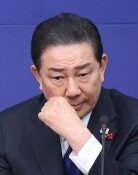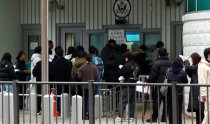Study: Private Education Costs Rising
Study: Private Education Costs Rising
Posted October. 09, 2007 03:24,
A study has revealed that the current high school standardization policy is more likely to encourage private education rather than curb it, pointing out the need to overhaul the policy in place.
According to the study, private education costs in standardized areas, which include urban areas, are higher than those in non-standardized regions that contain mainly small administrational units. Even if there is no income gap and regional differences, the expenses in standardized areas are still higher, rendering the policy virtually useless, according to the report.
Kang Tae-jung, professor of pedagogics at Chung-Ang University, plans to present his study titled, The Influence of the High School Standardization Policy on Private Education Expenditure, at the Third Korean Education and Employment Panel to be held October 9 at Hoam Faculty House of Seoul National University.
Professor Kang came up with his research results based on the Korean Education and Employment Panel Research report spearheaded by the Korea Research Institute for Vocational Education and Training which tracked 2,000 students starting in 2004, when they were in their third year of middle school, until 2006, when they were in the second year in high school.
According to Kangs research, when they were third-year middle school students, the average private education expense per student in standardized and non-standardized areas was 275,000 won and 176,000 won, respectively.
However, even though income and private education levels in the two areas are assumed to be the same, the expenses for private tutoring in the standardized region were 15,000 won higher than those in non-standardized areas, representing 15% of the real gap.
The standardization policy has failed to control private education; rather, it encouraged it, said Professor Kang.
Even when the surveyed students were in their first year in high school, the average private education cost per person in the standardized region was 296,000 won, 153,000 won more than in the non-standardized area, which recorded a 143,000 won cost per person. When all the conditions were the same, the standardized regions cost was 14,000 won higher, accounting for 9.1% of the real difference.
Kang analyzed that students in standardized areas tend to rely on private education, since every school has a large number of students and teachers are less interested in giving students career guidance, improving students academic performance, and determining students aptitude.
ceric@donga.com







